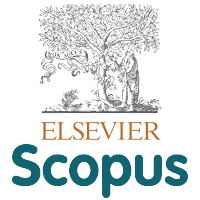Bioactivity Test of Gambir (Uncaria gambir Roxb) Processing Waste as an Environmentally Friendly Alternative for Pest Control Using Nano Technology
Abstract
Keywords
Full Text:
PDFReferences
Aprely, K. J., Misfadhila, S., & Asra, R. (2021). A Review: The Phytochemistry, Pharmacology and Traditional Use of Gambir (Uncaria gambir (Hunter) Roxb). EAS Journal of Pharmacy and Pharmacology, 3(1), 21–25. https://www.easpublisher.com/get-articles/1899
Arumsari, A. G. (2021). Analysis of Catechins in Gambir West Sumatra. ARRUS Journal of Engineering and Technology, 1(2), 47–54. https://doi.org/10.35877/jetech590
Chowański, S., Kudlewska, M., Marciniak, P., & Rosiński, G. (2014). Synthetic Insecticides – is There an Alternative? Polish Journal of Environmental Studies, 23(2), 291–302. https://www.pjoes.com/Synthetic-Insecticides-is-There-an-Alternative-,89194,0,2.html
Dibisono, M. Y., Ginting, M. S., & Hariri, S. (2022). Potensi Ekstrak Daun gambir (Uncaria gambir Roxb) sebagai Pestisida Nabati untuk Mengendalikan Hama Ulat Api (Sethotosea asigna van Eecke). Jurnal Agroplasma, 9(2), 262–266. https://doi.org/10.36987/agroplasma.v9i2.3338
Erlina, L. H., Lina, E. C., Reflinaldon, Djamaan, A., & Arneti. (2020). Insecticidal activity of nanoemulsion of Piper aduncum extract against cabbage head cartepillar Crocidolomia pavonana F. (Lepidoptera: Crambidae). IOP Conference Series: Earth and Environmental Science, 468(1), 012001. https://doi.org/10.1088/1755-1315/468/1/012001
Haritha, D., Faiz Ahmed, M., Bala, S., & Choudhury, D. (2021). Eco-friendly plant based on botanical pesticides. Plant Archives, 21(Suppliment-1), 2197–2204. https://doi.org/10.51470/PLANTARCHIVES.2021.v21.S1.362
Idris, H. (2015). Uji Kemampuan Insektisida Botanis Ekstrak Daun Gambir terhadap Hama (Plutella xylostella L). Jurnal Ipteks Terapan, 8(4). https://doi.org/10.22216/jit.2014.v8i4.22
Kasim, A., Malrianti, Y., Derosya, V., & Syukri, D. (2019). GC-MS Screening of Valuable Volatile Compounds in the Waste of Uncaria gambir. Annals of Biology, 35(2), 242–245. https://agribiop.com/gc-ms-screening-of-valuable-volatile-compounds-in-the-waste-of-uncaria-gambir/
Kim, K.-H., Kabir, E., & Jahan, S. A. (2017). Exposure to pesticides and the associated human health effects. Science of The Total Environment, 575, 525–535. https://doi.org/10.1016/j.scitotenv.2016.09.009
Kumar, S., & Kumar, A. (2022). Nanoemulsions: Techniques for the preparation and the recent advances in their food applications. Innovative Food Science & Emerging Technologies, 76, 102914. https://doi.org/10.1016/j.ifset.2021.102914
Lina, E. C., Dadang, Manuwoto, S., & Syahbirin, G. (2017). Safety and effectiveness of mixed plant extracts formulation against cabbages pests under field conditions. Journal of Biopesticides, 10(1), 25–34. https://doi.org/10.57182/jbiopestic.10.2.25-34
Lina, E. C., Reflin, Erlina, L. H., & Tama, D. P. (2021). Nanoemulation of mixed Tephrosia vogelii and Piper aduncum as an alternative control of cabbage pest Crocidolomia pavonana. IOP Conference Series: Earth and Environmental Science, 819(1), 012085. https://doi.org/10.1088/1755-1315/819/1/012085
Mushtaq, A., Mohd Wani, S., Malik, A. R., Gull, A., Ramniwas, S., Ahmad Nayik, G., Ercisli, S., Alina Marc, R., Ullah, R., & Bari, A. (2023). Recent insights into Nanoemulsions: Their preparation, properties and applications. Food Chemistry: X, 18, 100684. https://doi.org/10.1016/j.fochx.2023.100684
Prabha, S., Arya, G., Chandra, R., Ahmed, B., & Nimesh, S. (2016). Effect of size on biological properties of nanoparticles employed in gene delivery. Artificial Cells, Nanomedicine and Biotechnology, 44(1), 83–91. https://doi.org/10.3109/21691401.2014.913054
Samanta, S., Maji, A., Sutradhar, B., Banerjee, S., Shelar, V. B., Khaire, P. B., Yadav, S. V., & Bansode, G. D. (2023). Impact of Pesticides on Beneficial Insects in Various Agroecosystem: A Review. International Journal of Environment and Climate Change, 13(8), 1928–1936. https://doi.org/10.9734/ijecc/2023/v13i82149
Setyorini, D., & Antarlina, S. S. (2022). Secondary metabolites in sorghum and its characteristics. Food Science and Technology, 42, e49822. https://doi.org/10.1590/fst.49822
Sharma, S., Loach, N., Gupta, S., & Mohan, L. (2020). Phyto-nanoemulsion: An emerging nano-insecticidal formulation. Environmental Nanotechnology, Monitoring & Management, 14, 100331. https://doi.org/10.1016/j.enmm.2020.100331
Sun, Y., Wang, M., Mur, L. A. J., Shen, Q., & Guo, S. (2020). Unravelling the Roles of Nitrogen Nutrition in Plant Disease Defences. International Journal of Molecular Sciences, 21(2), 572. https://doi.org/10.3390/ijms21020572
Tan, M., Wu, H., Yan, S., & Jiang, D. (2022). Evaluating the Toxic Effects of Tannic Acid Treatment on Hyphantria cunea Larvae. Insects, 13(10), 872. https://doi.org/10.3390/insects13100872
Vuko, E., Dunkić, V., Ruščić, M., Nazlić, M., Mandić, N., Soldo, B., Šprung, M., & Fredotović, Ž. (2021). Chemical Composition and New Biological Activities of Essential Oil and Hydrosol of Hypericum perforatum L. ssp. Veronense (Schrank) H. Lindb. Plants, 10(5), 1014. https://doi.org/10.3390/plants10051014
DOI: http://doi.org/10.17503/agrivita.v46i2.4397
Copyright (c) 2024 The Author(s)

This work is licensed under a Creative Commons Attribution-NonCommercial 4.0 International License.








